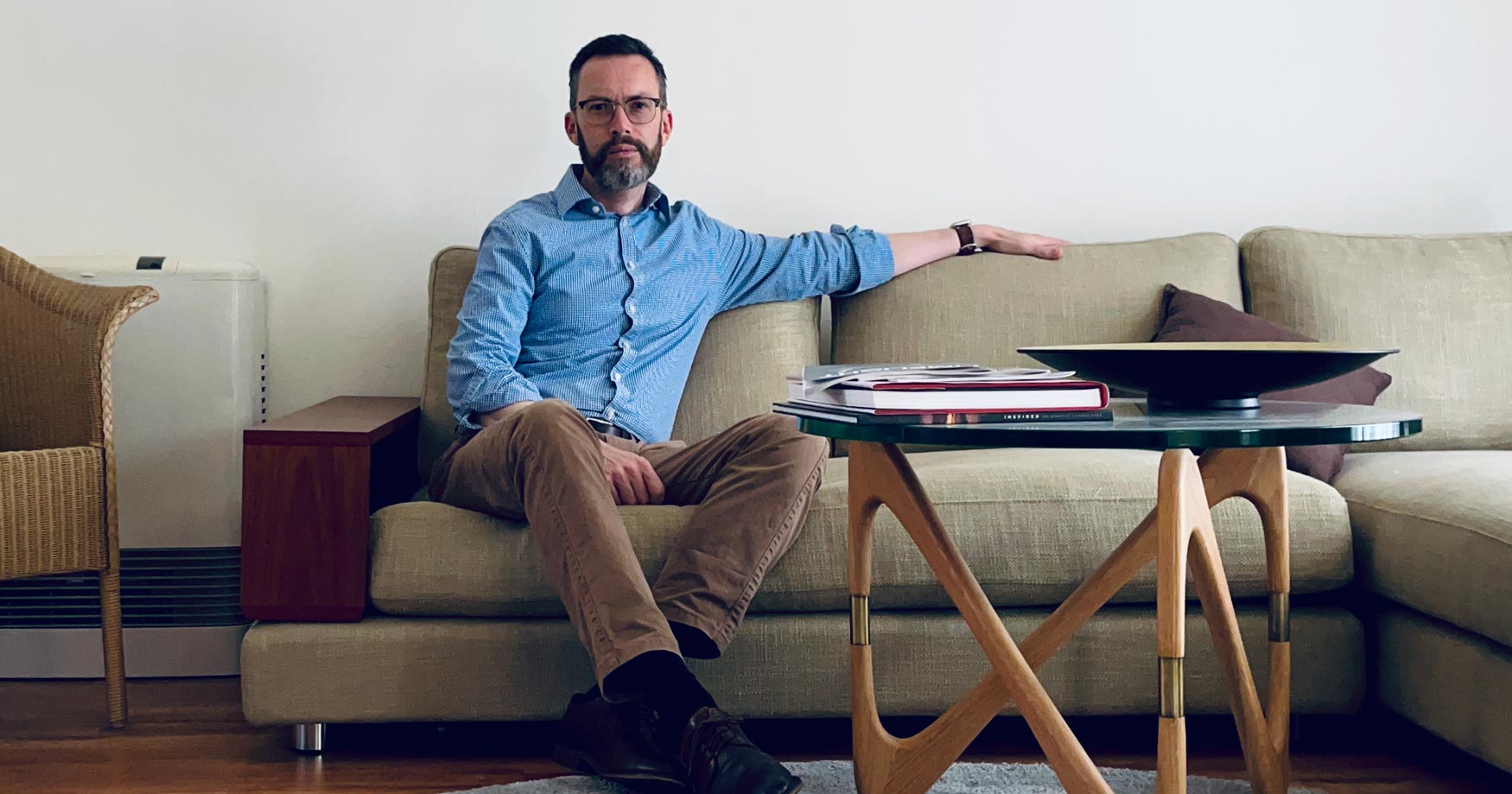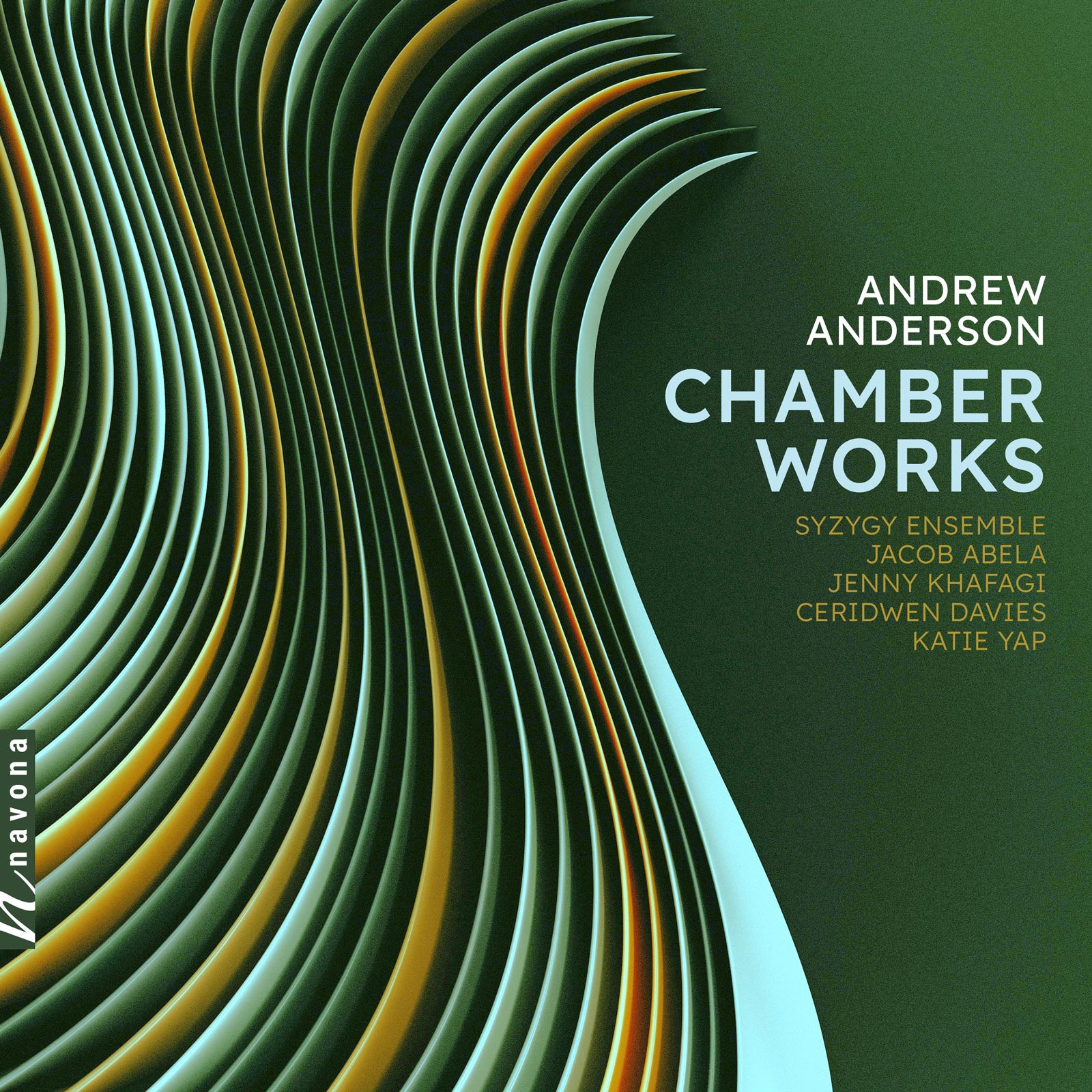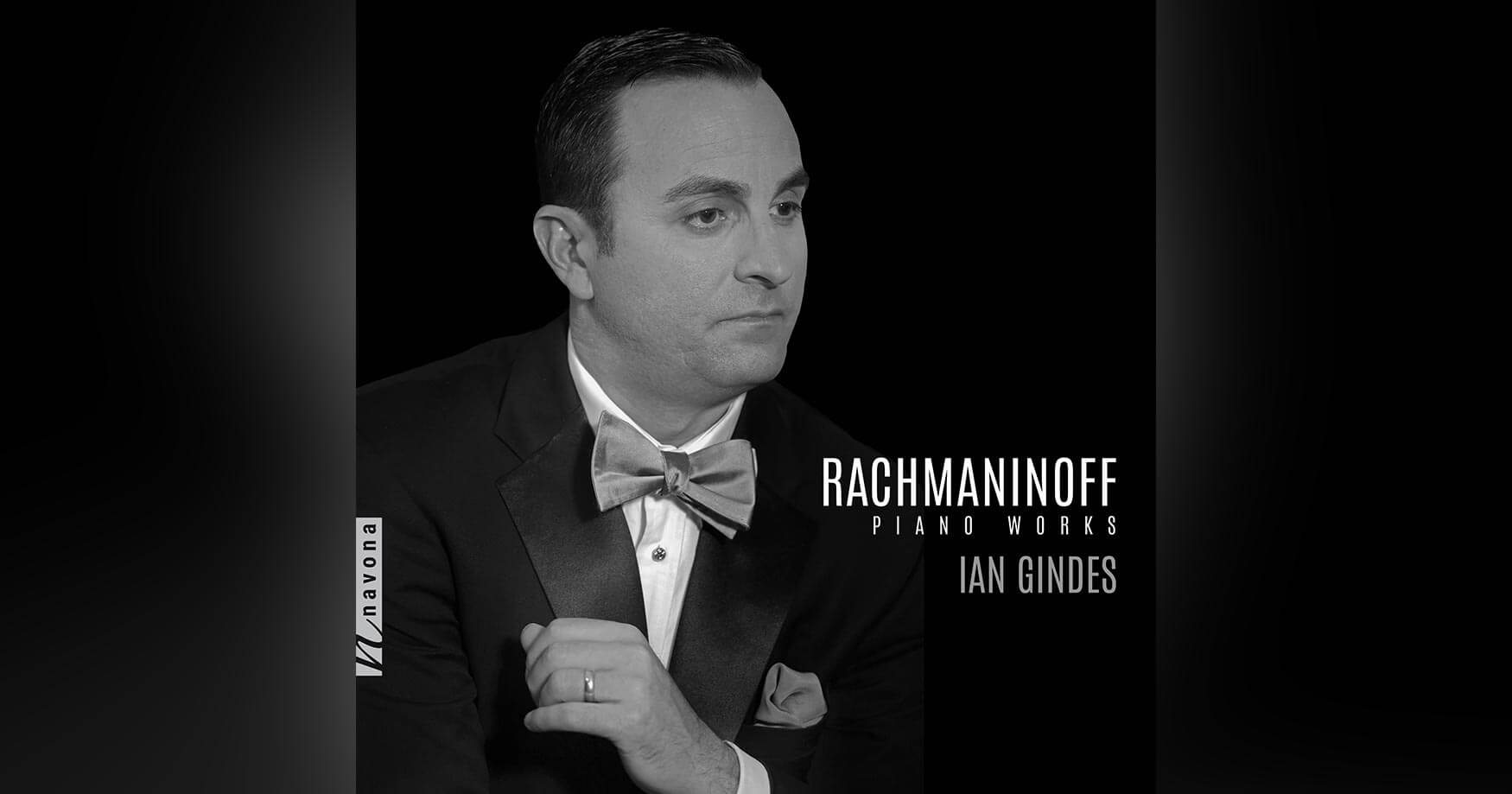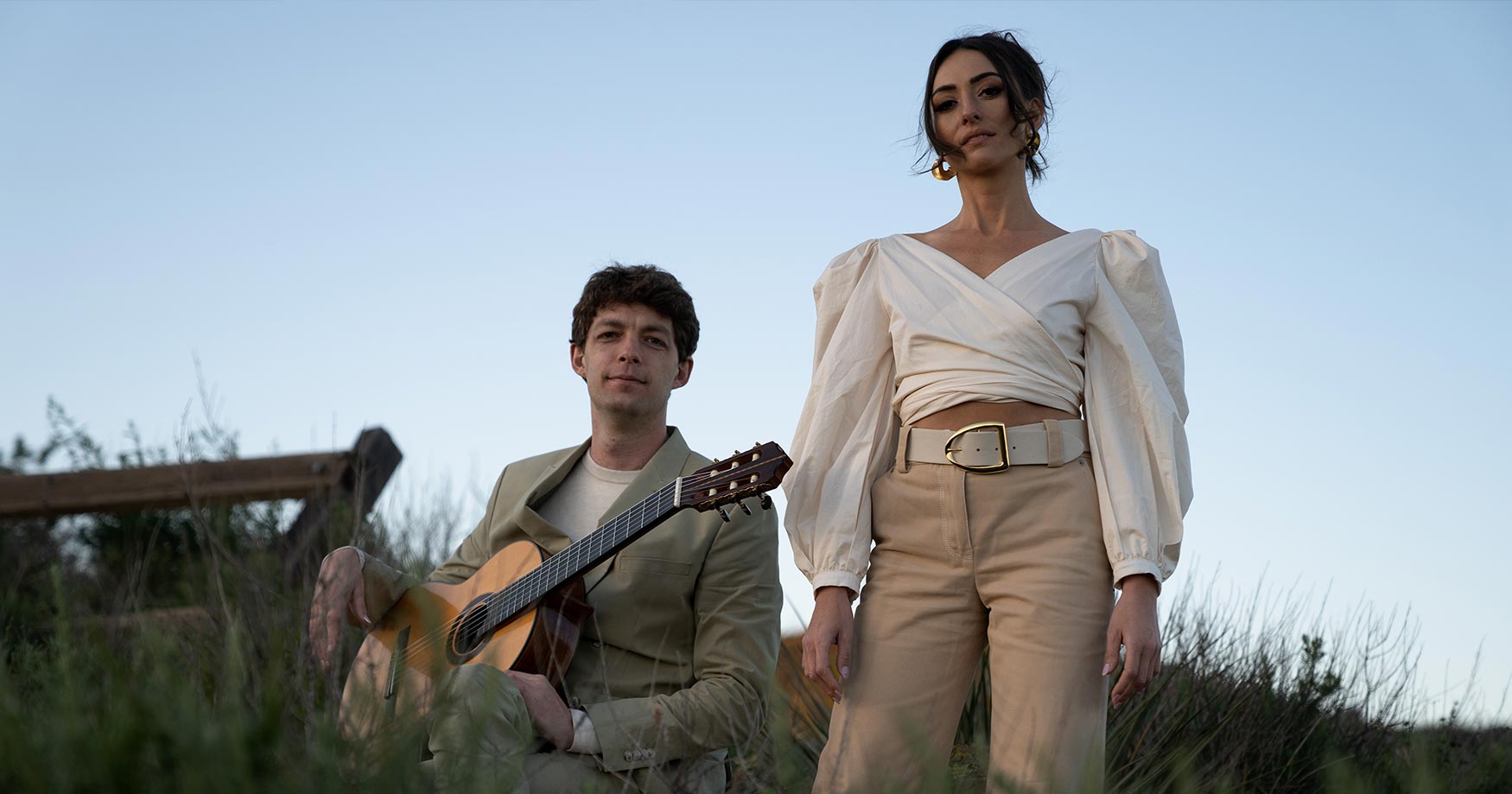In a modern age crowded with distractions, one quickly learns to appreciate the little oases of peace. Andrew Anderson’s 2022 Navona Records release, CHAMBER WORKS, might just be such an oasis – written with replenishing qualities, great clarity, and a sense of purpose. Throughout the album, Anderson skillfully demonstrates his ability to draw on the styles of the great compositional masters while creating a musical language that is truly unique and spoken through a variety of thoughtful orchestrations. Comprehensive in its content and imbued with tranquility, CHAMBER WORKS offers a variegated glimpse into Anderson’s distinct compositional style.
Today, Andrew is our featured artist in “The Inside Story,” a blog series exploring the inner workings and personalities of our composers and performers. Read on to learn about his favorite moments on the album, and the sentimental origins of its program…
When did you realize that you wanted to be an artist?
I can’t remember exactly when the idea of wanting to be a composer first struck, but it was certainly very early. By late primary school, the idea was already cemented in my mind. Neither would I be able to pin-point exactly what it was that made the idea so appealing. I didn’t have any composer role models at the time, which possibly only added to the mystique of what a composer was, and possibly ennobled my sense that I simply was a composer. From near the outset, my desire to create music was also linked with the desire to notate it. I suspect that I saw this as the hallmark of what a real composer did. I still enjoy the idea of notation — that something as mysterious as music can be captured so well by thoughtful lines and dots on a page — and I still find there is great visual beauty in a well-notated score.
Who was your first favorite artist(s) growing up?
In my teenage years I had a particular attraction to composers like Stravinsky, Debussy, Respighi, and Suk. Whilst deepening my love of music, my encounters with most of these composers — as far as I am aware — occurred after my interest in composition.
Of course, there would have been encounters with music in my pre-teens. I don’t recall having much awareness at the time of who created or performed the various music I would have heard, however. In hindsight, I must have spent a reasonable amount of time listening to George Kleinsinger through his famous Tubby the Tuba and — on the flip side of the same album that I had received for Christmas one year — his Toy Box Suite. Even then, the drama, melancholy, sadness, and fear in these works struck me deeply. My father also had an album of Elmer Berstein’s soundtrack for The Man with the Golden Arm. I remember the unrest and drama in the opening minute of the title track (which — even now — stands as a quite extraordinary piece of writing) and the mystery and reverie of the quieter orchestral cues. The soundtrack existed only as a musical work for me at the time, as it was only decades later that I would see the film and learn the story behind the work (not surprisingly so, given the adult nature of the film).
What was your most unusual performance?
I once received a message from a church music director in North Carolina, saying that their music team had recently performed a movement from my piano trio during Communion. When I looked up the church, I found it was a large-scale Baptist church with weekly attendances counted in the thousands. This may well be my largest live audience to date! I’m not sure how the piece appeared on their radar, although the same work was performed earlier that month in Seattle in a delegate-led classical music concert run as part of the social program for a large international scientific conference. Maybe one of the concert attendees, or a friend of the musicians, carried the work back to North Carolina. It is interesting to reflect on how commissions, collaborations, and performances can sometimes come through a quite convoluted path of connections.
What is your guilty pleasure?
Having a half-hour afternoon nap on a summer weekend. Opening the window and then drifting off, with the distant sounds of people going about their activities carried in on the warm breeze, is remarkably relaxing. I’m not sure it is a guilty pleasure — there isn’t really any guilt involved — but it certainly is an indulgence. Except, of course, when such naps are used to catch up on some missed sleep after a busy week.
What was your favorite musical moment on the album?
A tough question — something akin to asking “which is your favorite child?” There are many wonderful moments on the album, thanks in no small measure to the exceptional musicianship of Syzygy Ensemble and friends.
Two moments are certainly high on my list, however. The first is the ensemble playing at the climax of the “Fantasticheria” movement of the Suite for Clarinet and Piano. Everything comes together beautifully, and Robin Henry and Jacob Abela really capture the full spirit of the work — a notable achievement, given that it would be easy to become partly distracted by the multiple technical challenges involved in playing this section. The second moment that stands out is towards the end of the Piano Quartet — from around 15 minutes into the recording. Here we have a building of tension over a sustained pedal point, culminating in a return of the main theme on the piano in a section labelled “estatica e colossale” [ecstatic and colossal] in the score. Again, the musicians manage this build and climax beautifully.
What does this album mean to you personally?
The concert from which the album’s program was drawn was intended to be a musical celebration of my 50th birthday. As such, it represents the reaching of a milestone. The concert provided both a retrospective of my chamber work output as well as the opportunity to write some new works. Having the opportunity to work closely with the Syzygy Ensemble and friends was both a pleasure and an honor, and it is wonderful to have a record of this event.
The album is also a reminder that the magical, ineffable, but fundamentally necessary thing that is music is ultimately underpinned by real people, together in real spaces — whether together in the concert hall or in the recording studio. At the time of the concert, live events in Melbourne were just restarting following some of the most protracted shutdowns in the world. There was, not surprisingly, some hesitation in planning the project. Would venues be open when we were planning to perform? Would audiences come? What if the event has to be cancelled due to last-minute illness or quarantine? In the end, the concert — possibly the first live event in some time for many — had an extraordinary atmosphere: a hugely supportive audience, and a palpable feeling of some sort of return to performing normality for many of the musicians. Hopefully listeners will be able to sense a trace of this atmosphere when they listen to the album.
Explore Andrew Anderson’s Latest Release
ANDREW ANDERSON: CHAMBER WORKS
ANDREW ANDERSON: CHAMBER WORKS is available now from Navona Records. Click here to visit the catalog page and explore this album.
The views and opinions expressed in this post are those of the artist and do not necessarily represent or reflect the views and opinions held by PARMA Recordings LLC and its label imprints, subsidiaries, and affiliates.




